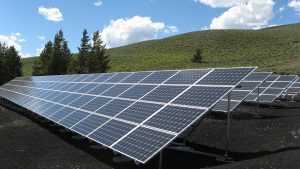 On January 22nd, President Trump approved a recommendation made by the United States International Trade Commission (ITC) to impose a tariff on imported solar cells and modules. The solar tariffs are set at 30% for the first year and will decline by 5% per year for three subsequent years.
On January 22nd, President Trump approved a recommendation made by the United States International Trade Commission (ITC) to impose a tariff on imported solar cells and modules. The solar tariffs are set at 30% for the first year and will decline by 5% per year for three subsequent years.
President Trump’s decision came four months after the U.S. ITC found that, according to a rarely used provision of the Trade Act of 1974, Section 201, the competitiveness of two U.S. domestic solar manufacturers – SolarWorld and Suniva – is negatively affected by low-price imported solar cells and panels. Three recommended “remedies” were proposed by U.S. ITC and Trump adopted the middle-of-the-road recommendation.
Although the final tariff level is lower than what SolarWorld and Suniva were seeking, it still triggered negative reactions from multiple constituencies. In a statement, the Solar Energy Industry Association (SEIA), which represents businesses across the solar value chain, stated that the tariff may cause the loss of 23,000 solar jobs in 2018 and result in a significant loss in investment. Utilities like Duke Energy and NextEra also spoke out against the trade case as solar becomes a viable and integral part of their business.
Trump’s decision to impose the solar tariffs created a chilling effect on the market. According to a GTM Research study, the tariff is likely to increase the cost of solar modules by 10 to 12 cents per watt, which translates to at least an 8.3% decrease in the market adoption of solar.
The claimed purpose of the tariff is to protect domestic solar panel manufacturing. However, among the current 260,000 solar jobs, only 38,000 (or 14%) are in manufacturing, which includes not only solar panel manufacturing but also racking systems, inverters, and other balance of system equipment manufacturing. In contrast, the majority of the solar jobs are in installation, which are the types of jobs that cannot be outsourced. While it is unclear if the tariff can revive the manufacturing sector, its negative impact on the domestic solar deployment market would inevitably hurt the solar installation sector.
While I do not believe the solar tariff was either good public policy or good economic policy, the impact will be very limited. First, US companies have been bringing in… Read more »
I agree there should be no huge effect. Except that it adds to the confusion and uncertainty of where this President stands on energy, business and international trade, and adds… Read more »